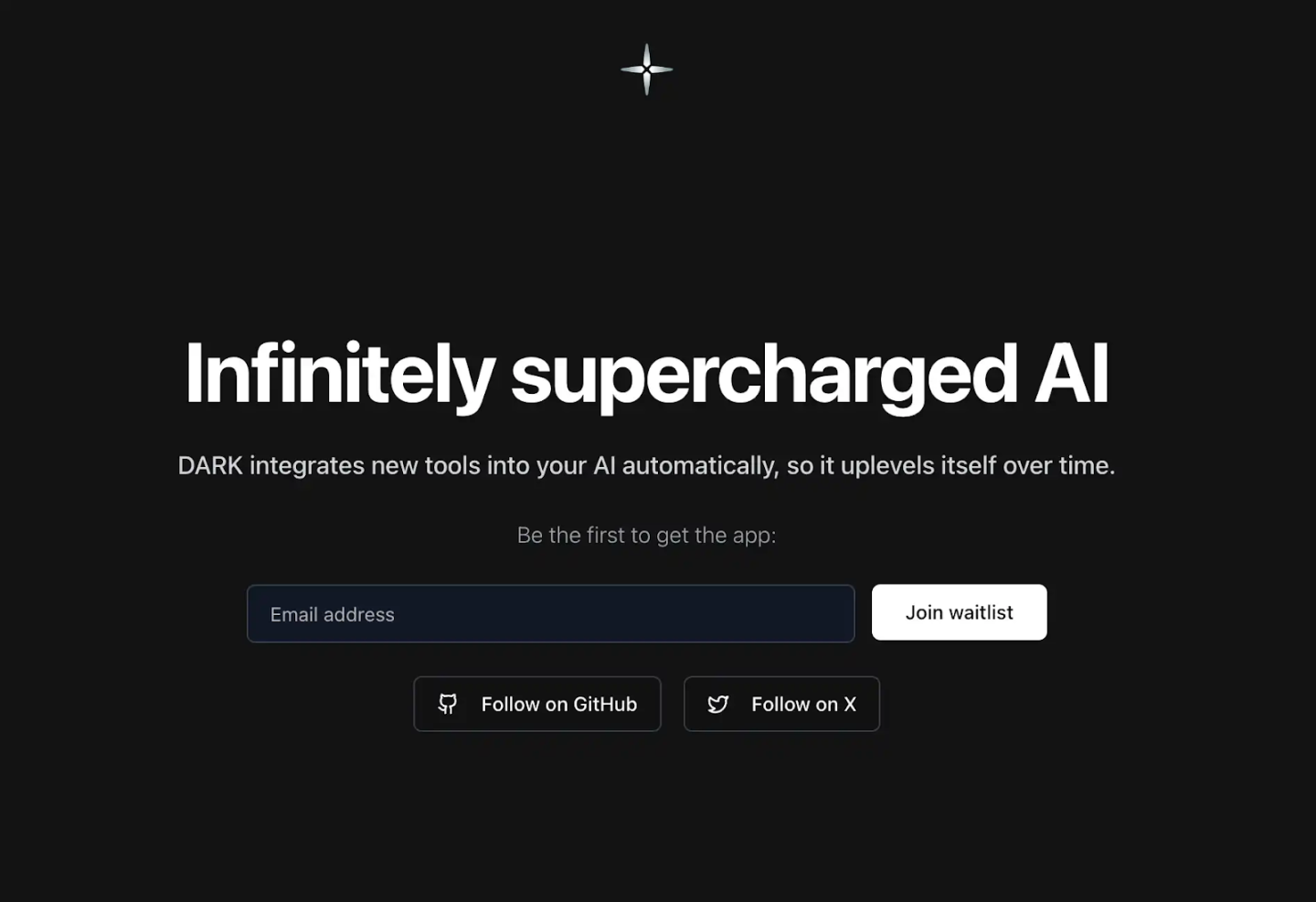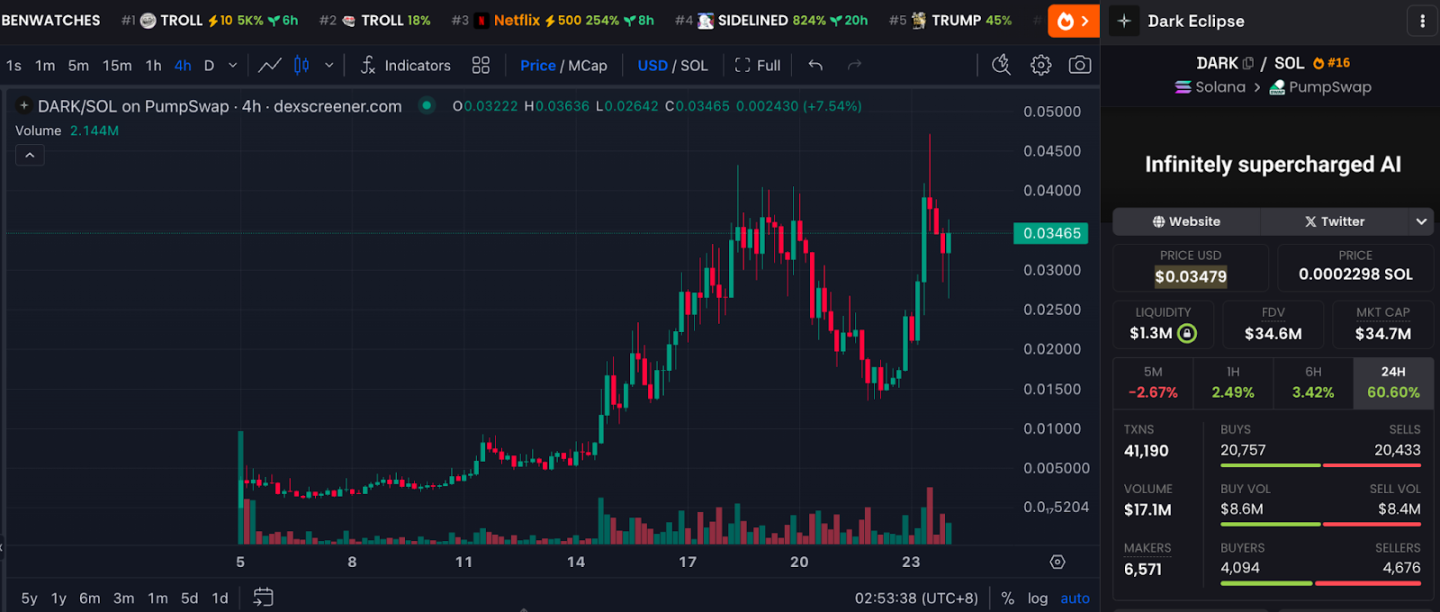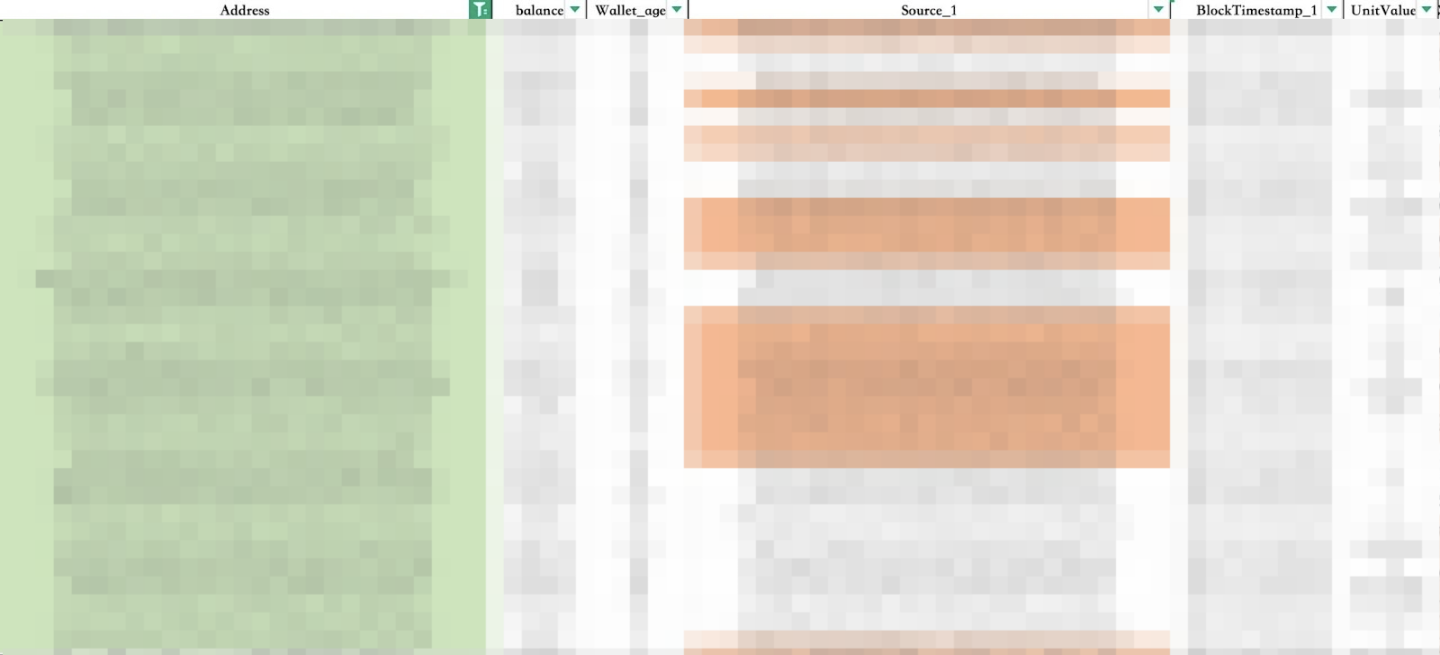DARK: From AI meme hits to chip control puzzles
If you've been following the crypto market lately, you've probably noticed the amazing performance of $DARK: the market is fully recovering against the backdrop of crypto-friendly signals from the new chairman of the US SEC, and $DARK, as an AI meme project in the Solana ecosystem, has become the frontrunner in this round of rally.
The token's market cap has climbed from $2 million to a new all-time high of $47 million.
The popularity of $DARK is not accidental. As an AI project based on the TEE protocol that provides multi-party computation (MCP) capabilities, its founder, @edgarpavlovsky, has created his own "tribute version" because of his love for the full-chain game Dark Forest. The project quickly gained market recognition for its efficient product delivery capabilities, and became the star token of the Solana community for a while.

However, behind these glossy narratives, the on-chain data reveals another picture: the $DARK's chip distribution shows obvious chip control characteristics. So we have to ask: is this a community-driven success, or is it a well-designed few-controlled effort?

On-chain analysis: Who's in control of $DARK?
We conducted a comprehensive analysis of the Top 500 holders of $DARK (excluding exchange addresses) and the results show that:
22.22% of the token supply is concentrated in 3 clusters;
There is a close relationship between these addresses, such as mutual transfer of funds and sharing of funding sources, forming a hidden control and funding network.
Here are the results of the analysis:
Green Cluster: The true master of the market
Number of addresses: 136
Controlling Ratio: 19.74%
On-chain features:
- Frequent transfer of funds between addresses;
- Some addresses share the same source of funds and where the funds go;
- 27 addresses hold $BC together, and another 20 addresses hold $RFC.
Green clusters are the core controlling force of $DARK, and their behavior patterns show a high degree of organization.

Yellow cluster: Small, stealthy controllers
Number of addresses: 3
Chip Control Ratio: 1.25%
On-chain features:
- There is a fund transfer between addresses;
- The flow of funds is highly consistent, but no common token holding characteristics have been found.
The yellow cluster, despite its small size, shows a high degree of synergy and may have played a supporting role in the marketing campaign.

Blue Cluster: The Low-key "Shadow Gamer"
Number of addresses: 3
Chip Control Ratio: 1.23%
On-chain features:
- There is a transfer of funds between addresses;
- No other token holding characteristics were found.
The on-chain behavior of the blue cluster is more secretive, possibly to diversify risk or hide money flows.

Scattered stories, centralized truths
$DARK's narrative is decentralized, community-driven, but the on-chain data exposes a high degree of centralization in the distribution of tokens: just 3 clusters control more than 22% of the token supply. The risks behind this should not be overlooked:
Pricing power is concentrated in the hands of a few
Pulling: Holding the fundraising group can create the illusion of rising prices through collective buying to attract retail investors FOMO;
Smashing: At the price high, the cluster sells in a concentrated manner, causing the market to plummet.
Liquidity control
By limiting the liquidity of tokens, the controlling group can further expand the market depth and create the illusion of price fluctuations.
The illusion of decentralization
While the narrative of $DARK is "community-driven", the actual control is concentrated in a small number of addresses, and the average investor actually lacks a say in the price.
Conclusion: Is DARK a miracle or script?
From the product to the narrative, $DARK seems to be a successful experiment in the Solana ecosystem. But on-chain data reveals hidden truths:
- Nearly 20% of the token supply is concentrated in green clusters, with highly consistent behavior patterns;
- 22.22% of the tokens are controlled by 3 clusters, with significant control characteristics;
The so-called decentralized narrative may just be a well-packaged story.
When investing in projects like $DARK, investors need to ask themselves a question: Are you paying for the success of your community, or are you adding to the wealth of a few?
